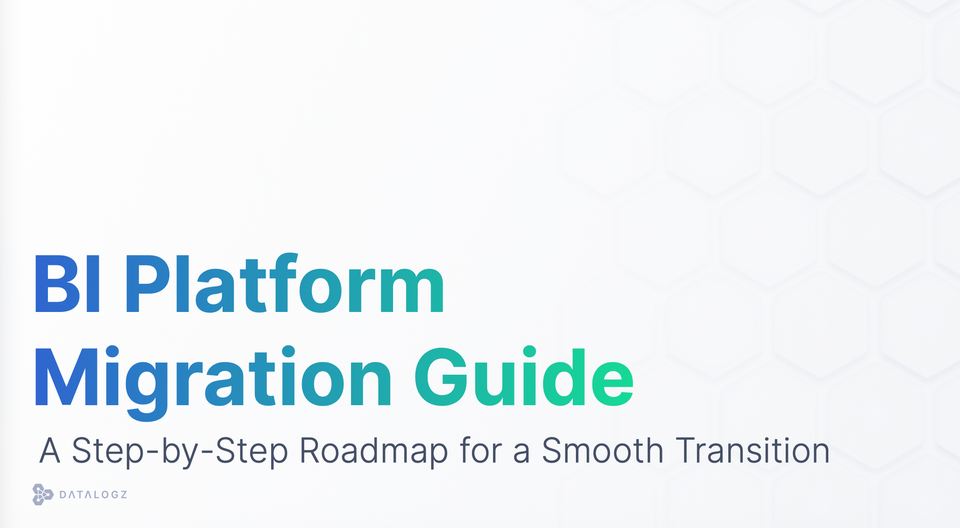How to Identify and Resolve BI Infrastructure and Architecture Issues?
Identifying and diagnosing infrastructure and architecture issues and implementing the right resolution strategies can help organizations ensure optimal performance and reliability of their BI systems.

Business intelligence (BI) systems play a critical role in helping organizations make data-driven decisions. However, the effectiveness of these systems is heavily dependent on the underlying infrastructure and architecture. Poor infrastructure and architecture can result in slow and unreliable BI systems, leading to inaccurate data analysis and decision-making. In this blog post, we'll discuss how to identify and resolve BI infrastructure and architecture issues, ensuring optimal performance and reliability of BI systems.
What is BI Infrastructure and Architecture?
BI infrastructure refers to the hardware and software components that support BI systems. This includes servers, storage devices, databases, and networking components. On the other hand, BI architecture refers to the design and structure of the BI system, including data sources, data models, and visualization tools.
BI infrastructure and architecture are essential in supporting effective BI systems. They enable the storage and processing of large amounts of data, facilitate data access and analysis, and provide insights that drive business decisions. Therefore, it is crucial to identify and resolve any infrastructure and architecture issues that may impede BI system performance.
Identifying Issues
There are several common infrastructure and architecture issues that can affect the performance and scalability of BI systems. These issues include:
- Poor Performance: Slow queries, long processing times, and delays in data retrieval can all lead to poor BI system performance. This can be caused by several factors, including outdated hardware, poorly optimized databases, and inefficient data models.
- Scalability Issues: As the volume of data in BI systems grows, there may be scalability issues. These can manifest in slow query response times, long processing times, and poor system performance.
- Data Quality Issues: BI systems are only as good as the data they contain. Data quality issues, such as missing or inaccurate data, can significantly impact the effectiveness of BI systems.
- Security Issues: BI systems often contain sensitive and confidential data. Security issues, such as unauthorized access or data breaches, can have severe consequences for organizations.
Diagnostic Tools
To identify and diagnose infrastructure and architecture issues in BI systems, organizations can use various diagnostic tools, including:
- Performance Monitoring: Performance monitoring tools can help identify slow queries, long processing times, and other performance-related issues. This can help organizations pinpoint the root cause of performance issues and optimize BI system performance.
- Capacity Planning: Capacity planning tools can help organizations forecast and plan for future data growth. This can ensure that BI systems remain scalable and can handle increasing volumes of data.
- Data Quality Management: Data quality management tools can help identify and resolve data quality issues. This can ensure that BI systems contain accurate and reliable data, leading to better decision-making.
Resolution Strategies
Once infrastructure and architecture issues have been identified, organizations can take several steps to resolve them. These strategies include:
- Upgrading Hardware: Outdated hardware can significantly impact BI system performance. Upgrading to newer hardware, such as faster processors and more significant memory, can improve system performance and scalability.
- Optimizing Network Performance: Slow network connections can lead to slow data retrieval and processing times. Optimizing network performance, such as upgrading to faster network switches or increasing bandwidth, can significantly improve BI system performance.
- Improving Data Models: Inefficient data models can lead to slow queries and poor system performance. Optimizing data models can improve query performance and ensure faster data retrieval times.
Continuous Improvement
Finally, it is essential to recognize that BI infrastructure and architecture are not static. They require ongoing monitoring and continuous improvement to ensure optimal performance and scalability. Organizations should regularly review and optimize their BI infrastructure and architecture to ensure they can handle increasing data volumes and changing business needs.
In conclusion, BI infrastructure and architecture are crucial components of effective BI systems. Poor infrastructure and architecture can significantly impact BI system performance and scalability, leading to inaccurate data analysis and decision-making. However, identifying and diagnosing infrastructure and architecture issues and implementing the right resolution strategies can help organizations ensure optimal performance and reliability of their BI systems. Additionally, ongoing monitoring and continuous improvement of BI infrastructure and architecture can help organizations stay ahead of any potential issues and ensure they are prepared for future data growth and changing business needs.
Key takeaways:
- BI infrastructure and architecture are critical components of a successful BI system that supports informed decision-making.
- Common BI infrastructure and architecture issues include poor performance, scalability problems, and compatibility issues.
- Diagnostic tools, such as performance monitoring and capacity planning, can help identify BI infrastructure and architecture issues.
- Resolution strategies, such as upgrading hardware and optimizing network performance, can help resolve BI infrastructure and architecture issues.
- Ongoing monitoring and continuous improvement of BI infrastructure and architecture are necessary to ensure optimal performance and reliability of BI systems.
- Regularly reviewing and improving BI infrastructure and architecture can help organizations stay ahead of any potential issues and support evolving business needs.



